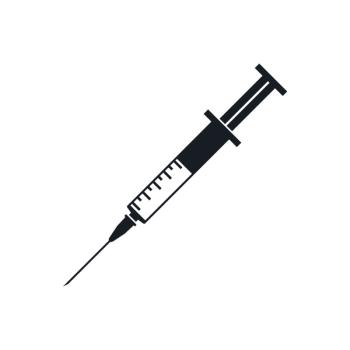
Parsing the sizable life expectancy gap for people with schizophrenia
Key Takeaways
- Schizophrenia patients have a 10 to 25-year reduced life expectancy, with a 58% higher mortality rate than the general population.
- Second-generation antipsychotics, particularly long-acting injectables, significantly reduce mortality risk in schizophrenia patients.
A study in Romania drills down into the specific causes of death among people with schizophrenia and suggests changes in policy and healthcare practice that could make them less common.
One of the stark truths about schizophrenia is that people with the disease have a far higher death rate than the general population.
They are more likely to die from disease. They are more likely to die from violence. They are more likely to die as they age. And they don’t live nearly as long. The life expectancy of people with schizophrenia is 10 to 25 years less than for people without the disease, according to multiple studies from countries around the world.
A
Like most new research on psychotic disorders published in prestigious medical journals — Schizophrenia is part of the Nature group of scientific publications — the study was conducted by researchers overseas, in this case in Romania. Although the location of the study undoubtedly limits the findings’ generalizability to the United States, it also effectively walled off the structural barriers to care and medication that play a significant role in patient outcomes and are major confounding factors in schizophrenia research in America.
The paper only hints at differences among health-care systems. But it notes that more than 95% of patients with schizophrenia in Romania are insured through the national health system, which provides free coverage for all regardless of income. Many receive disability benefits or early retirement, ensuring free access to all antipsychotic medications, including first- and second-generation drugs, clozapine, and long-acting injectables.
Corresponding author Petru Iulian Ifteni, M.D., is a professor and head of department for medical teaching and research at Transilvania University of Brasov in Brasov, Romania, where all members of the research team have affiliations, and a psychiatrist at the Clinical Hospital of Psychiatry and Neurology of Brașov, where the research was conducted.
The retrospective observational cohort study followed 635 adults previously diagnosed with schizophrenia for 10 years following admission between 2010 and 2013. Nearly 19.4% died during the follow-up period, a mortality rate that was 58% higher than the general population. The average age of death was 59, compared with 76 in all of central Romania’s surrounding Brasov County during those same years.
Violence accounted for 17.1% of the deaths, while medical conditions and diseases made up 67.5%; the rest were unknown.
Specific causes
Some of the specific causes are illuminating. Of the violent deaths, 6.5% were listed as suicide, compared with 10.6% recorded as accidents. More than half of the latter were due to asphyxia resulting from aspiration of food while eating, which the researchers speculated could be linked to the sedative side effects of antipsychotic medication.
The causation of the nonviolent deaths was dominated by cardiovascular disease (27.6%), which the authors wrote was likely influenced by metabolic effects of antipsychotics (they cause weight gain and increased blood sugar and lipid levels and metabolic syndrome, which raises the risk for Type 2 diabetes).
Ranking just behind cardiovascular disease was infectious disease (17.1%), with pneumonia the most common, either as the immediate cause or as part of the clinical presentation (for example, many deaths caused by Covid-19 were due to pneumonia). Many international studies have found that people with schizophrenia are more vulnerable to a range of infectious diseases as a result of immune dysregulation, physical comorbidities and barriers to preventive care, although that last one would be less significant in Romania. Pandemic mortality rates among schizophrenics were very high worldwide.
Older age is particularly dangerous for people with schizophrenia, with study participants aged 50 to 59 having an eightfold increased risk of death compared with participants under 30, and those aged 70 to 75 having a 34-fold increased risk, the authors wrote, “reflecting the cumulative burden of aging in this population.”
More frequent hospital admissions also were linked to dramatically increased mortality risk.
The biggest apparent protective factor was use of second-generation antipsychotic medications (63% reduction in mortality risk compared to first-generation drugs, and second-generation antipsychotics administered as long-acting injectables were associated with an 81% reduced risk of death).
Ifteni and his co-authors recommended several measures to improve outcomes and reduce premature mortality among people with schizophrenia:
- “Patients with frequent psychiatric readmissions — often reflecting more complex clinical courses — may benefit from structured follow-up and strengthened community-based care.”
- “Closer integration of psychiatric and general medical services is needed to ensure early detection and management of somatic comorbidities, particularly cardiovascular and metabolic conditions.”
- “Preventive efforts should also prioritize infection-related risks through routine vaccination (e.g., pneumococcal, influenza, and COVID-19) and prompt intervention for respiratory symptoms.”
They also recommended that schizophrenia patients be automatically given easier access to medical specialists and to preventive services, such as mammograms, Pap smears, colonoscopies, PSA screenings and low-dose chest CT scans for high-risk smokers.
“Embedding these services within psychiatric care pathways could help address modifiable risk factors and reduce the persistent mortality gap observed in this population,” they wrote.
Newsletter
Get the latest industry news, event updates, and more from Managed healthcare Executive.




















































